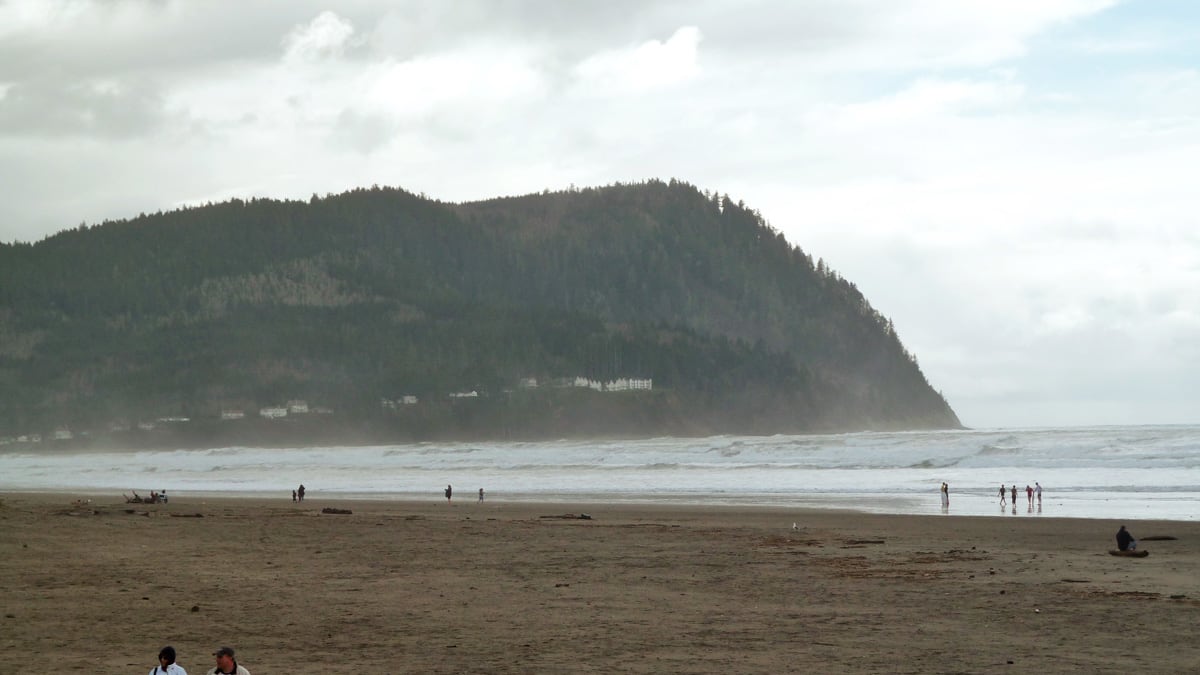Hurricane Sandy was indeed a Frankenstorm, a monster that lived up to its hyperbolic nickname. Millions lost power. Dozens lost their lives. It will take weeks to get the region fully up and running again. Entire swaths of the Eastern Seaboard are forever changed.
But Sandy is a lightweight compared with the natural disaster that has been brewing for the past 300 years on the other side of the country. Here, at the joinder of two massive tectonic plates some 50 to 70 miles from the Pacific shoreline, lies a fleet of Frankenstorms—an army of monsters.
This disaster will strike without the days of warning East Coast residents had, without breathless weather forecasters and Doppler radar, without all that time to stock up on candles and bottled water, without functioning roads to drive from homes perched precariously on oceanfront cliffs to some safe inland respite. This disaster will come in a flash, and geologists say it will be nothing like the United States has ever seen.
“It’ll be like having three or four Katrinas, at once, spread up and down the coast,” says Chris Goldfinger, director of the Active Tectonics and Seafloor Mapping Lab at Oregon State University.
Adds Robert Yeats, author of the book Living With Earthquakes in California and a professor emeritus of geoscience at OSU: “We could see hundreds of thousands of people killed.”

The Cascadia Subduction Zone is the wonky name for the place where all this mayhem will begin. That zone is a fault line, a crease in the planet floor between the North American plate and the Continental plate. This fault line is 600 miles long, and that length is why it’s so dangerous. The plates are locked tight against each other, but they’re not static. They’re pushing, with all the might of the same geological forces that cause continental drift.
And one day, they’ll slip.
Just a little. But because these plates are so long and so tightly locked, that shift will unleash a massive earthquake, of magnitude 9.0 or greater.
Understand what a magnitude-9.0 earthquake is. The 1989 Loma Prieta earthquake that struck the San Francisco Bay Area—causing 57 deaths, plus the collapse of a section of the Cypress Street Viaduct and another portion of the Bay Bridge—was a 6.9. The Sumatra quake, which killed hundreds of thousands of people Indonesia, was an 8.8. The Cascadia Subduction Zone could rattle at 9.0, or 9.5, and the difference between those numbers isn’t a small thing, Goldfinger explains. Each tenth of a point on the Richter scale represents a 50 percent increase in seismic power.
“By the time you get from an 8 to a 9, you’re about 32 times the energy,” he told The Daily Beast.
A quake that scale would be the largest ever recorded in the U.S., as powerful as the 9.0 that hit Japan last March, the strongest temblor that country had ever seen. It will shake bridges so fiercely and for such a long time—five or 10 minutes, perhaps—that the roads people think they’ll use to evacuate will crumple. The bridges that cross coastal rivers, that fire trucks and ambulances use to get from one side of town to the next, will tumble into the water. Electricity? Nowhere.
But the big population centers in the Pacific Northwest, they’re fine, right? They’re far enough away from the fault line to barely feel the quake? Wrong. Portland, Seattle, and cities north and south are all close enough to this fault to lose at least their older, unreinforced masonry buildings, the ones not upgraded to current-day seismic standards, Goldfinger says. Buildings full of people.
“It will put Portland and Seattle out of action potentially for years,” he says.
And that’s just the earthquake. Next up, in the Mother of All Disasters trifecta, another deadly piece of jargon: liquefaction. That’s when the earth shakes the sandy substrate beneath houses and fire stations and hospitals all along the coast so vigorously that the soil mixes with the high-water table beneath it, turning the ground into quicksand. So what didn’t get shaken into pieces gets swallowed up by the earth, at least in some places.
Then comes Cascadia’s final blow: the tsunami. Waves traveling at jetliner speeds across the open ocean, barely higher than the surface of the water far off shore but soaring up into the sky, 100 feet or higher, once they approach land.
Waves. Not just one wave, not just one skyscraper of a wall of water, but one after another after another, each flooding the cities along the Oregon and Washington coasts, ripping trees out by their roots and swirling them back and forth into a muddy whirlpool. Swimming skills don’t save people when they’re being pinned beneath the water by a floating bus.
“The tsunami will probably be the main reason” for casualties, Yeats says. “We’ll all be going about our daily lives, then, whammo. If it’s a local earthquake, you’ve got 20 minutes to get out.”
Then, the aftermath. Aid deliverable only by boat, or helicopter, for weeks, maybe even months, while those destroyed roads are brought slowly back to life. Hopefully with some help from the Federal Emergency Management Agency or the National Guard. “Something like Cascadia going off is really not on the radar for power centers on the east, where decisions are made," says Goldfinger. "They focus on themselves, mostly.” (Remember Katrina?) “I go to these regional meetings to discuss scenarios, response plans, and resilience, and the message from people at the National Guard is that they’re going to be victims like everybody else. People will be on their own for awhile, maybe a week or two.”
Emergency officials in Oregon and Washington have spent the past six years (since Sumatra) freaking people out about all this, urging lawmakers to build more earthquake-resistant structures and scientists to design constantly evolving “inundation maps” to allow homeowners in areas likely to be slammed by a tsunami to figure out how at risk they are.
But the necessary infrastructure upgrades in Oregon alone are estimated at $30 billion, Yeats says, and that’s money the little state doesn’t have. And even if all that money was available, there’s nothing anyone can do to stop a Cascadia Subduction Zone quake. The best advice people on the coasts pass along is just terrifying, when you think about how helpless it means you really are: if you feel the ground shaking, run. Grab the backpack you’ve hopefully already packed with emergency supplies, scoop up your children and animals, and just run. You’ve got 10 minutes, maybe 20. Run to the highest point you can find, as quickly as you can find it. Don’t come down even after the first wave recedes back out into the sea, because there’ll be another one after that. Just sit up there on that hill, provided you’ve made it there safely, and then wait.
Meanwhile, worry and wonder. Predicting the exact arrival of a Cascadia Subduction Zone quake is also nearly impossible, and constantly evolving. Sometimes geologists offer up weird formulas like “10 percent chance in the next 50 years,” but really it could be tomorrow, or it could be 700 years from now.
That’s because, in a study of this region’s past 10,000 years, scientists figure there have been 20 quakes. On average, then, they happen every 500 years, and the last one was in 1700. But they don’t occur at regular intervals. They occur in clusters of three or four at a time, spaced 300 years or so apart. The last three all happened that way, for example. So if we’re in a cluster now, we’re overdue for another Cascadia quake. If we’re not, we could have another 700 years of easy living.
Here’s hoping it’s the latter.






